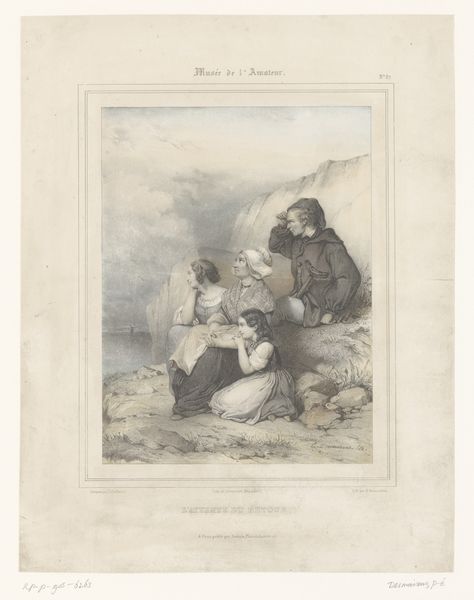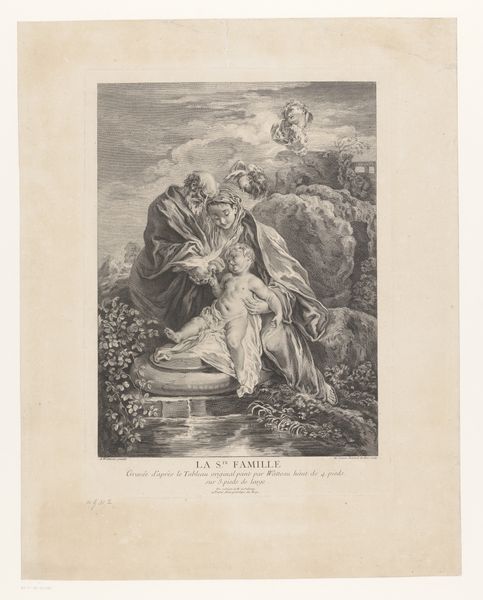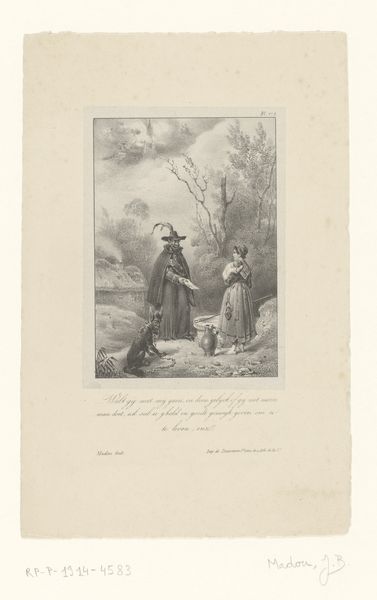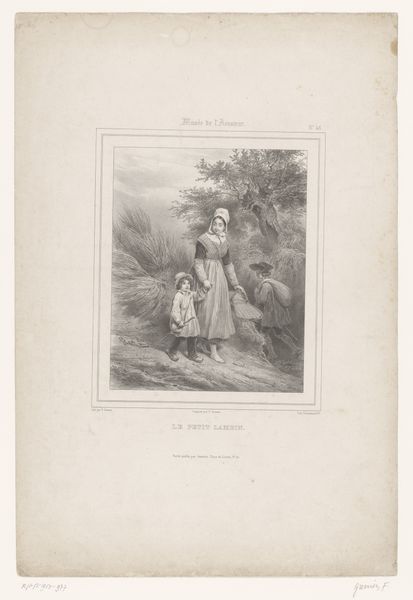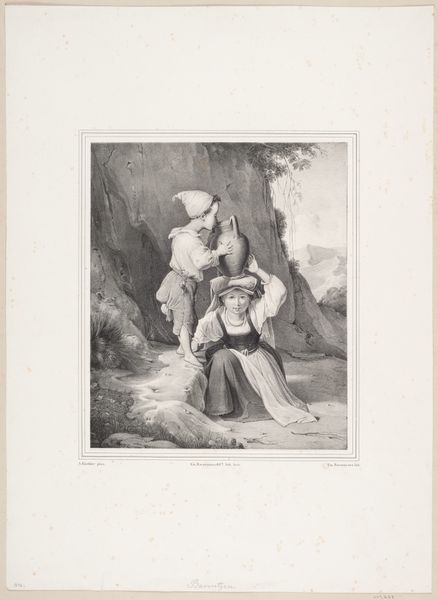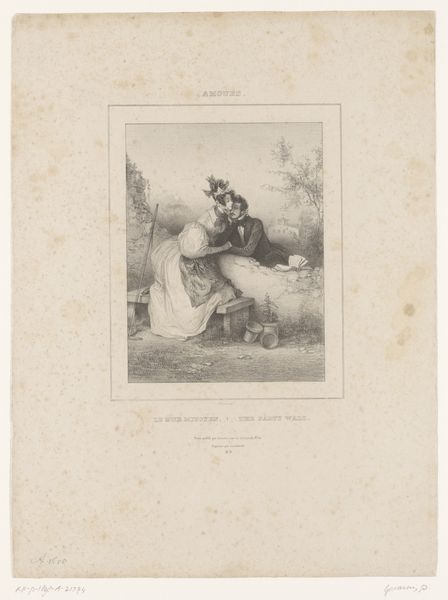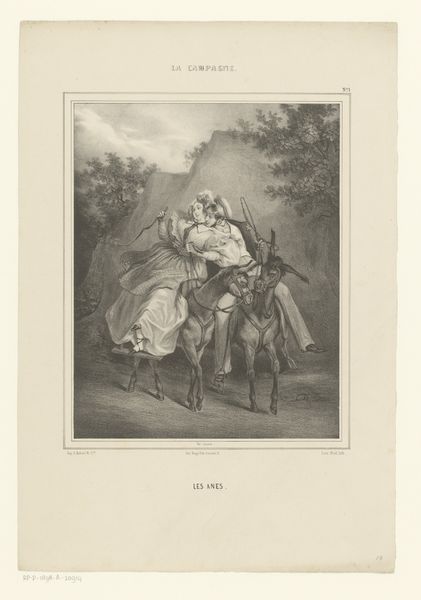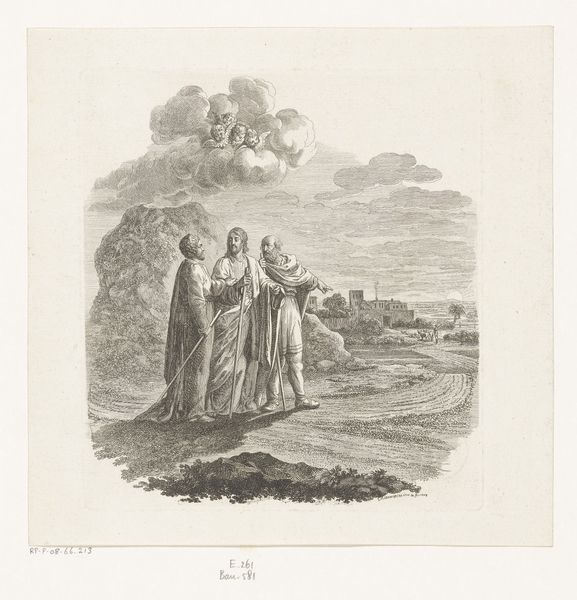
#
photo of handprinted image
#
aged paper
#
toned paper
#
light pencil work
#
ink paper printed
#
pencil sketch
#
light coloured
#
old engraving style
#
watercolour illustration
#
watercolor
Dimensions: height 588 mm, width 432 mm
Copyright: Rijks Museum: Open Domain
This print of Orpa, Ruth en Naomi, was made by Franz Maria Ingenmey, likely in the mid-19th century. It's a lithograph, a process that democratized image-making. The design is drawn on a flat stone with a greasy crayon, then printed. The appeal of lithography was its relative ease and the way it captured the subtleties of a drawing, as you can see here in the fine lines and tonal gradations. What’s interesting is that the image depicts women of the Bible who were gleaners, collecting leftover crops after the harvest. Consider the social context: Ingenmey made this print at a time of huge social change. Lithography itself was an industrial technology, impacting older graphic art practices. The subject and the means of production are thus tied to wider social issues of labor, class, and religion. Paying attention to these connections enriches our understanding, revealing how Ingenmey’s work speaks to its time, blurring distinctions between art, craft, and the world around it.
Comments
No comments
Be the first to comment and join the conversation on the ultimate creative platform.

